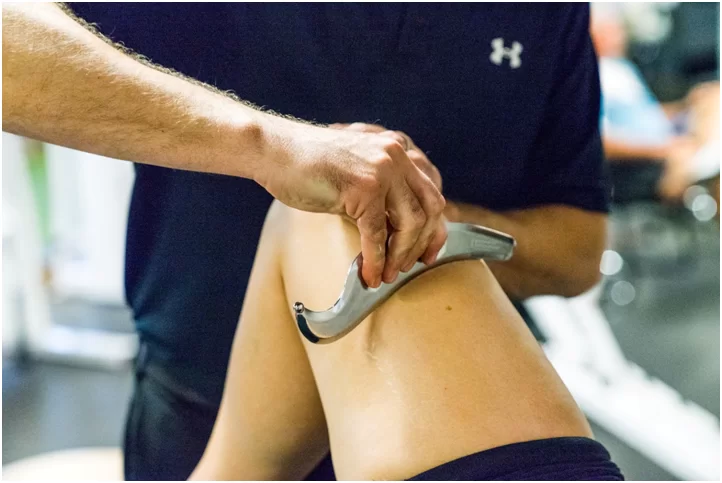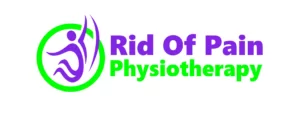Instrument Assisted Soft Tissue Mobilization(IASTM)
Instrument-assisted soft tissue mobilization (IASTM) is a skilled myofascial intervention used for the treatment of soft tissues. It is applied using tools usually made of stainless steel with bevelled edges and cones that can adapt to a variety of body shapes and allow deep penetration. It is used for the diagnosis and treatment of soft tissue problems.

IASTM-How it Works
The muscles effectively break the fascial boundaries and the red tissue. The ergonomic design of these instruments gives the clinician the ability to find the limits and allows the clinician to treat the affected area with the right amount of compression.
The introduction of controlled microtrauma into the formation of affected soft tissues triggers the stimulation of local inflammatory reactions. Microtrauma initiates the absorption of abnormal fibrosis or excess red tissue and facilitates healing of the functions leading to the regeneration of the affected soft tissues. Adherence within soft tissues that may have formed as a result of surgery, dysfunction, repetitive strain, or other mechanisms, is a violation that allows full functional restoration to occur.
Conditions For Which IASTM is Usually Used
- Neck Pain
- Fasciitis
- Rotator Cuff Tendinitis
- Patellar Tendinitis
- Tibialis Posterior Tendinitis
- Musculoskeletal Imbalances
- Chronic Joint Swelling Associated with Sprains/Strains
- Muscle Strains
- Non-Acute Bursitis
- Back Pain
- Ligament Sprains
- Heel Pain /Achilles Tendinitis
- Medial Epicondylitis, Lateral Epicondylitis
- Carpal Tunnel Syndrome
- Post-Surgical and Traumatic Scars
- Myofascial Pain and Restrictions
Contraindications
- Thrombophlebitis
- Uncontrolled hypertension
- Patient intolerance/hypersensitivity
- Open wound (unhealed suture site)
- Unhealed fracture
- Osteomyelitis
- Myositis ossificans
- Hemophilia
- Hematoma
Precautions
- Burn scars
- Acute inflammatory conditions
- Inflammatory condition secondary to infection
- Rheumatoid arthritis
- Pregnancy
- Kidney dysfunction
- Anti-coagulant medications
- Cancer
- Varicose veins
IASTM Physiology & Benefits
Physiological Mechanism
The study focused on the benefits of IASTM at the cellular level. The inflammatory response initiated by micro trauma to the affected tissues increases fibroblast, collagen synthesis, maturation, and reconstitution of the irregular collagen fiber matrix following the IASTM application. Leading to fragile tissue, adhesions, and facial contours.
The fibroblast is the most important cell in the outer cell matrix (ECM). Repair, regeneration, and maintenance of soft tissue occur in ECM. Fibroblast binds to ECM, which includes collagen, elastin, and proteoglycans, among many other vital substances. Fibroblasts can react like mechanotransducers, meaning they can detect biophysical (conversion) types such as compression, torque, shear, and fluid flow, and create mechanochemical responses.
IASTM has a neurophysiological effect as it stimulates mechanosensitive neurons through skin remodeling. Mechanosensitive neurons include mechanoreceptors that are responsible for two-point discrimination and mechano-nociceptors responsible for pain perception. IASTM stimulates the vascular response to damaged soft tissues, by increasing blood flow.
Benefits to the Therapist
IASTM provides clinicians with a mechanical advantage, thus preventing over-use of the hands, IASTM provides deeper tissue penetration with less compressive forces to the interphalangeal joints of the physiotherapist’s hand. After spinal pain, the second most common cause of absenteeism from work was the overuse of the thumb. Most physiotherapists had to modify their treatment techniques because of pain in the thumb.
Also, it increases the vibratory perception of the physiotherapist’s hand holding the instrument to alter soft tissue properties such as tissue restrictions or adhesions. So the therapist can detect soft tissue irregularities easier.
RID OF PAIN PHYSIOTHERAPY
BEST PHYSIOTHERAPY CLINIC IN GURGAON- PHYSIOTHERAPY
- OSTEOPATHY
- CHIRPRACTIC
- STRESS HEALING
